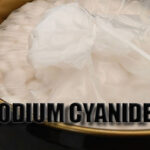
CIP stands for carbon-in-pulp, a gold extraction process that uses activated carbon to absorb gold ions from a slurry of gold-bearing ore. It is a more efficient and environmentally friendly alternative to traditional cyanidation processes.

The CIP process typically involves the following stages:
- Crushing and Grinding: The ore is crushed and ground to a fine powder to increase the surface area exposed to the leaching solution. This improves the extraction efficiency.
- Leaching: The slurry of ground ore is introduced into a series of agitated tanks containing a cyanide solution. The cyanide dissolves the gold from the ore particles, forming gold cyanide complexes.
- Carbon Adsorption: The pregnant solution (leach solution containing dissolved gold) is passed through a series of columns packed with activated carbon. The activated carbon selectively adsorbs the gold cyanide complexes from the solution, trapping the gold on its surface.
- Desorption: To recover the gold from the activated carbon, it is passed through a desorption column containing a solution of a stripping agent, such as zinc sulfate. The stripping agent displaces the gold cyanide complexes from the carbon, allowing the gold to dissolve into the solution.
- Electrowinning or Zinc Precipitation: The gold-rich solution is then subjected to either electrowinning or zinc precipitation to recover the gold. Electrowinning involves the use of an electric current to deposit the gold onto a cathode. Zinc precipitation involves the addition of zinc dust to the solution, which precipitates the gold as a gold-zinc alloy.
- Refining: The gold recovered from electrowinning or zinc precipitation is refined to remove impurities and produce pure gold bars.
CIP offers several advantages over traditional cyanidation processes:
- Higher Recovery Rates: CIP can achieve gold recovery rates of up to 95%, compared to 80-85% for cyanidation.
- Lower Environmental Impact: CIP uses less cyanide and produces less cyanide waste compared to cyanidation.
- Reduced Risk of Cyanide Accidents: CIP processes are less prone to cyanide spills and leaks compared to cyanidation processes.
- Flexibility with Different Ore Types: CIP can be used to process a wider range of ore types compared to cyanidation.
Overall, the CIP process is a more efficient, environmentally friendly, and versatile method for extracting gold from ore. It is becoming increasingly popular in gold mining operations worldwide.
Whatsapp:+86 133 1927 7356
Email:Desen@oremagnetic.com




